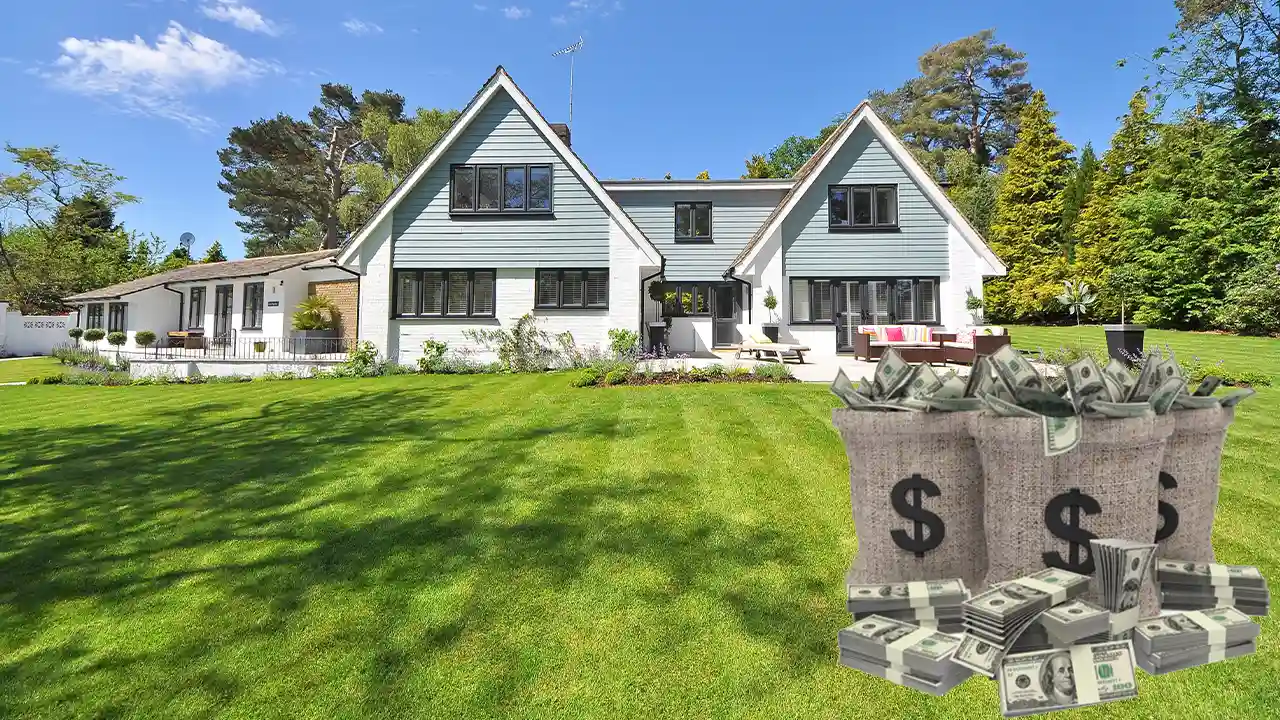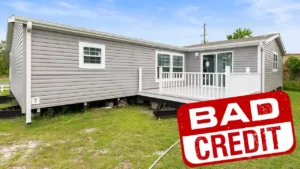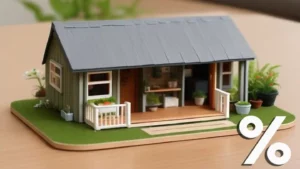Mortgagerateslocal.com – Do you have your eyes set on a luxurious house that costs 1.5 million dollars? Do you wonder how much money you need to make to afford such a property?
If you are dreaming of buying a house that costs 1.5 million dollars, you might be wondering how much income you need to afford it.
You might also be curious about the monthly mortgage payments, the interest rates, and the other costs involved. We will answer these questions and provide you with some tips on how to finance your dream home.
By the end of this post, you will have a clear idea of whether you can afford a 1.5 million dollar house, and how to make it happen. So, let’s get started.
What is the Monthly Mortgage Payment on a 1.5 Million Dollar House?
The monthly mortgage payment on a 1.5 million dollar house depends on several factors, such as the loan amount, the loan term, the interest rate, and the down payment. Generally, the higher the loan amount and the interest rate, the higher the monthly payment.
The longer the loan term, the lower the monthly payment. The larger the down payment, the lower the loan amount and the monthly payment. To illustrate, let’s assume that you have a 20% down payment ($300,000), which means your loan amount will be $1,200,000. Let’s also assume that you have a 30-year fixed mortgage with a 3.5% interest rate.
Using a mortgage calculator, you can find out that your monthly payment will be $5,391. This includes the principal and interest, but not the taxes, insurance, and HOA fees, which may vary depending on your location and property type.
What Income Do You Need to Afford a 1.5 Million Dollar House?
The income you need to afford a 1.5 million dollar house also depends on several factors, such as your debt-to-income ratio, your credit score, and your lender’s requirements. Generally, the lower your debt-to-income ratio and the higher your credit score, the easier it will be to qualify for a mortgage. The higher your income, the more likely you will be able to afford the monthly payments and the other costs.
One common rule of thumb is that your total housing costs (including mortgage, taxes, insurance, and HOA fees) should not exceed 28% of your gross monthly income. This is known as the front-end ratio. Another common rule of thumb is that your total monthly debt payments (including mortgage, credit cards, student loans, car loans, etc.) should not exceed 36% of your gross monthly income. This is known as the back-end ratio.
Using these rules, you can estimate the minimum income you need to afford a 1.5 million dollar house. For example, if your total housing costs are $6,500 per month (assuming 2% for taxes and insurance and $500 for HOA fees), and your total debt payments are $7,500 per month (assuming $1,000 for other debts), then your front-end ratio is 26% and your back-end ratio is 30%. To meet these ratios, your gross monthly income should be at least $25,000, which translates to $300,000 per year.
Of course, these are just rough estimates, and your actual income requirements may vary depending on your lender’s criteria and your personal financial situation. Some lenders may allow higher ratios, especially if you have a large down payment, a high credit score, or significant assets. Some lenders may also consider other factors, such as your employment history, your savings, and your cash reserves.
What are the Other Costs Involved in Buying a 1.5 Million Dollar House?
Besides the monthly mortgage payments, there are other costs involved in buying a 1.5 million dollar house, such as the closing costs, the maintenance costs, and the opportunity costs. You should be aware of these costs and factor them into your budget before you make a purchase decision.
Closing Costs
Closing costs are the fees and expenses that you pay when you finalize your mortgage and complete the transfer of ownership. They typically range from 2% to 5% of the loan amount, depending on your location, your lender, and your loan type. For a 1.5 million dollar house, the closing costs could be anywhere from $24,000 to $60,000. Some of the common closing costs include:
- Appraisal fee: This is the fee that the lender charges to have a professional appraiser evaluate the value of the property. It usually costs around $500 to $1,000.
- Origination fee: This is the fee that the lender charges to process and underwrite your loan. It usually costs around 0.5% to 1% of the loan amount.
- Discount points: These are optional fees that you pay to the lender to lower your interest rate. One point equals 1% of the loan amount. For example, if you pay two points on a $1,200,000 loan, you will pay $24,000 upfront and reduce your interest rate by 0.25%.
- Title insurance: This is the insurance that protects you and the lender from any defects or liens on the title of the property. It usually costs around 0.5% to 1% of the purchase price.
- Escrow fee: This is the fee that the escrow company charges to handle the funds and documents involved in the transaction. It usually costs around $500 to $1,000.
- Recording fee: This is the fee that the county or city charges to record the deed and the mortgage in the public records. It usually costs around $100 to $500.
- Transfer tax: This is the tax that the state or local government charges to transfer the ownership of the property. It varies widely by location, but it could be as high as 4% of the purchase price in some areas.
- Home inspection fee: This is the fee that you pay to have a professional inspector check the condition of the property and identify any potential issues or repairs. It usually costs around $300 to $500.
- Home warranty fee: This is the fee that you pay to have a service contract that covers the repair or replacement of major systems and appliances in the home. It usually costs around $500 to $1,000 per year.
Maintenance Costs
Maintenance costs are the ongoing expenses that you pay to keep the property in good shape and prevent any damage or deterioration. They typically range from 1% to 4% of the property value per year, depending on the age, size, and condition of the home. For a 1.5 million dollar house, the maintenance costs could be anywhere from $15,000 to $60,000 per year. Some of the common maintenance costs include:
- Property tax: This is the tax that the local government charges based on the assessed value of the property. It varies widely by location, but it could be as high as 3% of the property value per year in some areas.
- Homeowners insurance: This is the insurance that protects you from any damage or loss caused by fire, theft, vandalism, natural disasters, or liability claims. It usually costs around 0.5% to 1% of the property value per year.
- HOA fee: This is the fee that the homeowners association charges to maintain the common areas and amenities in the community, such as landscaping, pools, gyms, security, etc. It varies widely by location and property type, but it could be as high as $1,000 per month in some areas.
- Utilities: These are the costs of using electricity, gas, water, sewer, trash, internet, cable, etc. in the home. They vary widely by location, usage, and provider, but they could be as high as $500 per month in some areas.
- Repairs: These are the costs of fixing or replacing any broken or worn-out items in the home, such as appliances, plumbing, roofing, flooring, etc. They vary widely by the type and extent of the repair, but they could be as high as $10,000 per year in some cases.
- Improvements: These are the costs of upgrading or adding any features or amenities to the home, such as remodeling, landscaping, painting, etc. They vary widely by the type and scope of the improvement, but they could be as high as $50,000 per year in some cases.
Opportunity Costs
Opportunity costs are the potential benefits that you give up when you choose one alternative over another. In the context of buying a 1.5 million dollar house, the opportunity cost is the return that you could have earned if you invested your money elsewhere, such as in the stock market, bonds, or real estate.
For example, let’s assume that you have a 20% down payment ($300,000) and a 30-year fixed mortgage with a 3.5% interest rate. Your monthly payment will be $5,391, and your total interest paid over the life of the loan will be $641,676. If you invested your down payment and your monthly payment in the stock market instead, and earned an average annual return of 10%, you would have $6,887,177 after 30 years. This means that you would have $5,245,501 more than if you bought the house.
Of course, this is a simplified example, and there are many other factors to consider, such as the appreciation of the house, the tax benefits of homeownership, the risk and volatility of the stock market, and your personal preferences and goals. However, the point is that buying a 1.5 million dollar house is not only a financial decision, but also an opportunity cost decision.
How to Finance a 1.5 Million Dollar House
Financing a 1.5 million dollar house is not an easy task, as it requires a large amount of money, a good credit history, and a reliable income source. However, there are some options that you can explore to make your dream home a reality.
1. Conventional Mortgage
A conventional mortgage is a type of loan that is not backed by any government agency, such as the Federal Housing Administration (FHA) or the Department of Veterans Affairs (VA). It is offered by private lenders, such as banks, credit unions, or online lenders.
A conventional mortgage usually has stricter requirements than a government-backed loan, such as a higher credit score, a lower debt-to-income ratio, and a larger down payment. For a 1.5 million dollar house, you will need a jumbo loan, which is a type of conventional mortgage that exceeds the conforming loan limits set by the Federal Housing Finance Agency (FHFA).
The conforming loan limit for 2024 is $548,250 for most counties in the US, and up to $822,375 for high-cost areas. A jumbo loan typically has higher interest rates and fees than a conforming loan, as it poses more risk to the lender.
To qualify for a jumbo loan, you will need a credit score of at least 700, a debt-to-income ratio of no more than 43%, and a down payment of at least 10%. However, some lenders may require a higher credit score, a lower debt-to-income ratio, and a larger down payment, depending on the loan amount and the property type. You may also need to provide additional documentation, such as tax returns, bank statements, and proof of assets.
2. VA Loan
A VA loan is a type of loan that is backed by the Department of Veterans Affairs (VA). It is available to eligible veterans, active-duty service members, reservists, National Guard members, and surviving spouses. A VA loan offers several benefits, such as no down payment, no private mortgage insurance (PMI), and lower interest rates than a conventional loan.
However, a VA loan also has some limitations, such as a loan limit, a funding fee, and a minimum property requirement. The loan limit for a VA loan is the same as the conforming loan limit for a conventional loan, which is $548,250 for most counties in the US, and up to $822,375 for high-cost areas.
However, if you have full VA entitlement, which means you have not used your VA loan benefit before or you have paid off your previous VA loan in full, you may be able to borrow more than the loan limit without a down payment.
The funding fee for a VA loan is a one-time charge that helps cover the cost of the VA loan program. It ranges from 1.4% to 3.6% of the loan amount, depending on your type of service, your loan type, and your down payment.
You can pay the funding fee upfront or roll it into your loan balance. However, some borrowers are exempt from paying the funding fee, such as those who receive disability compensation from the VA or those who are the surviving spouses of veterans who died in service or from a service-connected disability.
The minimum property requirement for a VA loan is a set of standards that the property must meet to be eligible for a VA loan. These standards ensure that the property is safe, sound, and sanitary, and that it meets the local building codes and zoning laws.
Some of the common requirements include having adequate heating, plumbing, electricity, roofing, ventilation, and drainage systems, as well as being free of any hazards, defects, or pests. You will need to have a VA-approved appraiser inspect the property and certify that it meets the minimum property requirement.
3. Cash Purchase
A cash purchase is the simplest and most straightforward way to buy a 1.5 million dollar house, as it does not involve any financing, interest, or fees. However, it also requires the most amount of money, as you will need to pay the full purchase price, plus the closing costs, upfront. A cash purchase also has some advantages and disadvantages, such as:
- Advantages:
- You can save money on interest, fees, and PMI, which can add up to thousands of dollars over the life of a loan.
- You can avoid the hassle and stress of applying for and qualifying for a loan, which can take weeks or months to complete.
- You can have more bargaining power and flexibility with the seller, as you can offer a faster closing, a lower price, or fewer contingencies.
- You can have more security and peace of mind, as you will not have to worry about defaulting on your loan, losing your home to foreclosure, or being underwater on your mortgage.
- Disadvantages:
- You can tie up a large amount of money in one asset, which can limit your liquidity, diversification, and opportunity cost.
- You can lose the tax benefits of homeownership, such as the mortgage interest deduction and the property tax deduction, which can lower your taxable income and save you money on taxes.
- You can face higher maintenance and repair costs, as you will be responsible for all the expenses related to the upkeep and improvement of the property.
- You can expose yourself to more market risk, as the value of the property may fluctuate depending on the supply and demand, the economic conditions, and the neighborhood trends.
Conclusion
Buying a 1.5 million dollar house is a big decision that requires careful planning, preparation, and research. You will need to consider your income, your expenses, your savings, your credit, and your goals, as well as the different financing options, costs, and benefits involved.
You will also need to compare and shop around for the best deal, negotiate with the seller, and complete the closing process. However, if you follow the steps and tips outlined in this article, you will be able to achieve your dream of owning a 1.5 million dollar house.




